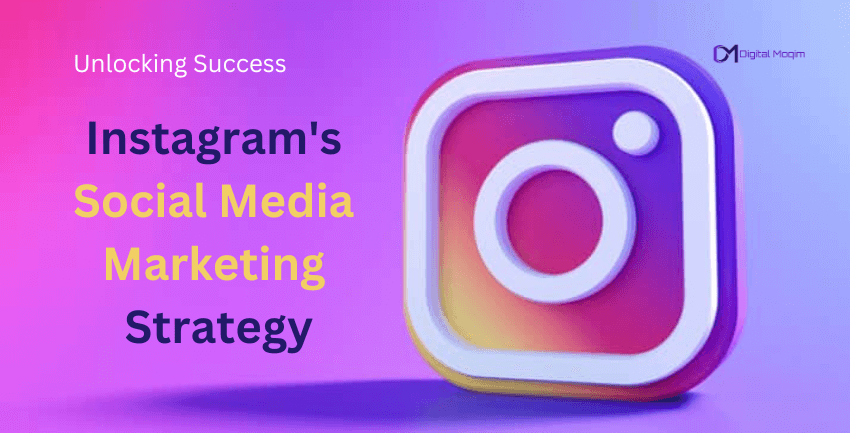
Social Media Marketing Strategy using Instagram
Instagram is now a vital platform for promoting businesses on social media. With over a billion active users, it provides a vast audience for businesses to engage with. If you're looking to kickstart your social media marketing strategy on Instagram, the first step is to sign up for an account.
Step 1: Download the Instagram App
Instagram is primarily a mobile app, so the first thing you need to do is download it to your smartphone or tablet. You can find the app on the App Store (iOS) or Google Play Store (Android). Once downloaded, open the app.
Step 2: Sign Up with Your Email Address or Phone Number
When you open the app, you'll be greeted by the login screen. Since you're creating a new account, tap on "Sign up" at the bottom of the screen. You can choose to sign up using your email address or phone number. Select the option that's most convenient for you.
Step 3: Create a Username and Password
Next, you'll be prompted to create a unique username and password for your Instagram account. Your username should reflect your brand or business name and be easy for users to remember. Your password should be strong and include a mix of letters, numbers, and symbols to ensure security. Confirm your password to proceed.
Step 4: Complete Your Profile
After setting up your username and password, you'll be asked to complete your profile. This is a crucial step for your social media marketing strategy, as your profile is the first impression users will have of your brand. Here's what you'll need to do:
- Profile Picture: Upload your brand's logo or a high-quality image that represents your business. The recommended profile picture size is 110x110 pixels.
- Name: Enter your brand's name or a name that's easily recognizable by your audience.
- Bio: Write a concise and engaging bio that describes your business and what you offer. You have 150 characters to make a compelling statement.
- Website: Add a link to your website or landing page. This is a valuable space to drive traffic to your site.
- Contact Information: You can provide contact options like email or phone number, making it easier for potential customers to get in touch.
Step 5: Connect with Facebook (Optional)
Instagram gives you the option to connect your account to your Facebook page. This can simplify the process of managing your account and running ads. If you have a Facebook page for your business, you can link it at this stage.
Step 6: Find Friends and Follow Accounts (Optional)
Instagram will suggest accounts for you to follow based on your interests and the information you've provided. You can choose to follow these accounts or skip this step for now.
Step 7: Explore the App
Congratulations, you've successfully created an Instagram account for your brand! Now, take some time to explore the app. Familiarize yourself with the interface, discover content, and see how other businesses in your industry are using Instagram for marketing. To help you get started, I've outlined a day-wise, week-wise plan to increase social media engagement. Keep in mind that these are general guidelines, and you should adapt them to your specific goals, audience, and platform preferences.
Day-wise Social Media Engagement Strategy:
Day 1: Content Planning
- Review your content calendar.
- Brainstorm new content ideas.
- Plan the content for the week, including posts, stories, and any special campaigns.
Day 2: Content Creation
- Create engaging visual content (images, videos, graphics).
- Write compelling captions and hashtags.
- Make sure your posts match what your brand is all about and what you want to achieve.
Day 3: Content Scheduling
- Schedule posts using social media management tools like Buffer, Hootsuite, or Sprout Social.
- Optimize posting times based on your audience's activity.
Day 4: Audience Engagement
- Respond to comments and messages promptly.
- Engage with your followers by liking and leaving comments on their posts.
- Share user-generated content related to your brand.
Day 5: Analytics Review
- Analyze the performance of your recent posts.
- Identify which types of content resonate best with your audience.
- Change your content plan according to what you've learned.
Day 6: Hashtag Research
- Research trending and relevant hashtags in your niche.
- Incorporate these hashtags into your upcoming posts.
- Keep an eye on popular daily and weekly hashtags.
Day 7: Weekend Campaign
- Launch a weekend-specific campaign, contest, or giveaway to boost weekend engagement.
- Promote it across all your social media channels.
- Week-wise Social Media Engagement Strategy:
Week-wise Social Media Engagement Strategy:
Week 1: Audience Research
- Analyze your audience demographics and interests.
- Tailor your content to better suit their preferences.
- Consider creating audience personas for better targeting.
Week 2: Content Variety
- Diversify your content by incorporating different formats like polls, quizzes, and behind-the-scenes content.
- Experiment with different storytelling approaches.
Week 3: Collaborations
- Identify potential collaboration opportunities with influencers or complementary brands.
- Reach out to initiate partnerships or joint campaigns.
Week 4: Analyze and Adjust
- Review your monthly analytics.
- Assess what worked and what didn't in terms of engagement.
- Adjust your strategy and content plan for the upcoming month based on insights.
Remember that social media engagement is an ongoing process, and consistency is key. Regularly monitor your progress, adapt to changing trends, and always prioritize providing value to your audience to keep them engaged and loyal to your brand.
